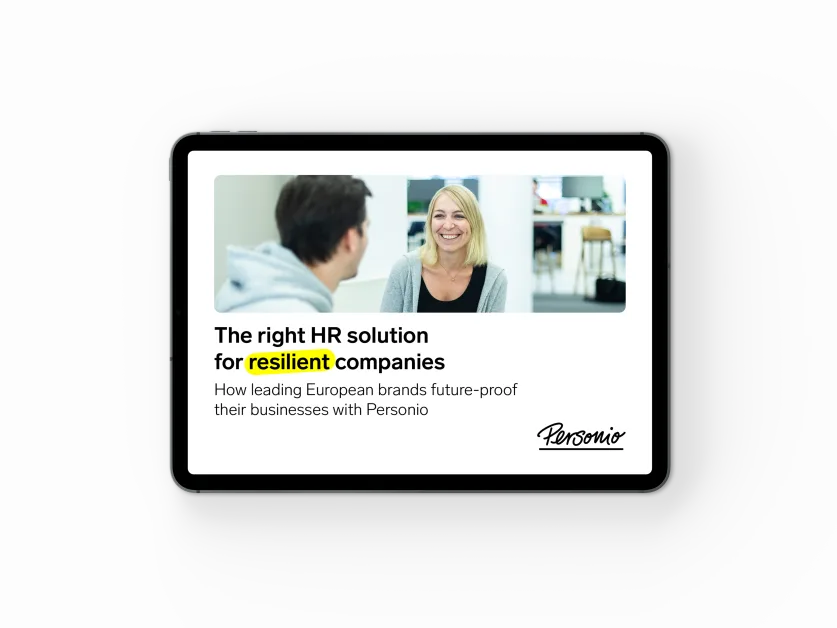Download:
The Right HR Solution For Resilient Companies

Eight international companies reveal how they have set themselves up for the future with Personio. Find out how you can:
Establish agile processes
Develop a sustainable team
Make strategic decisions based on data